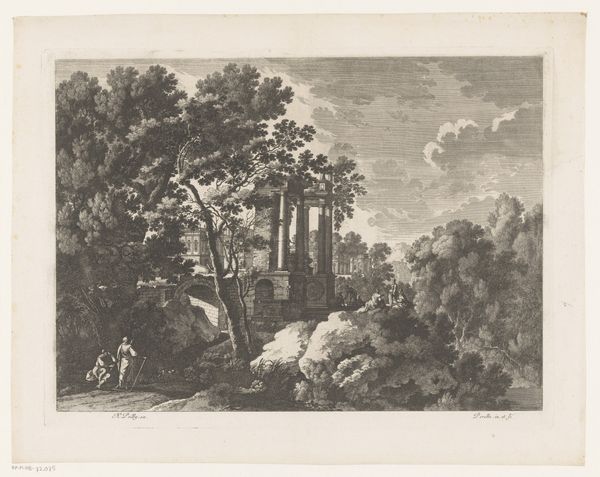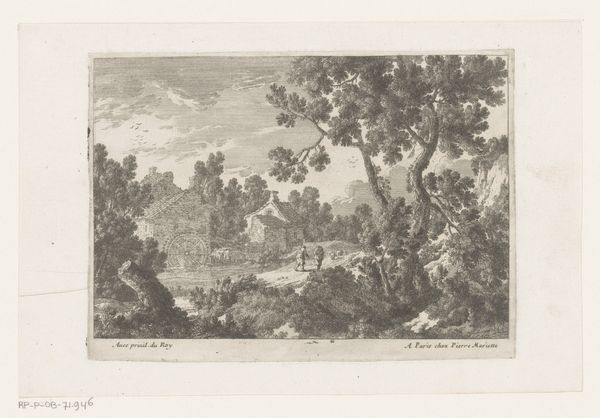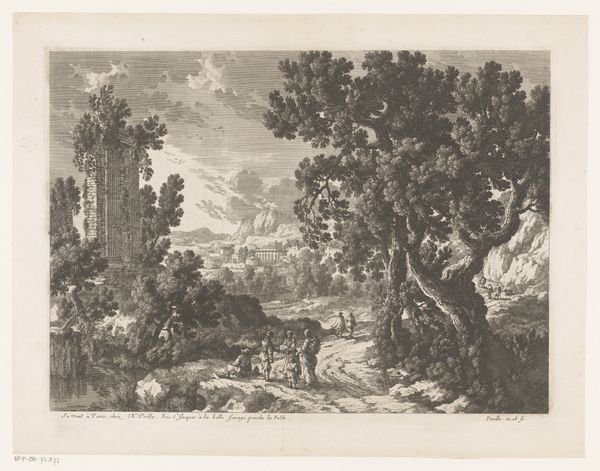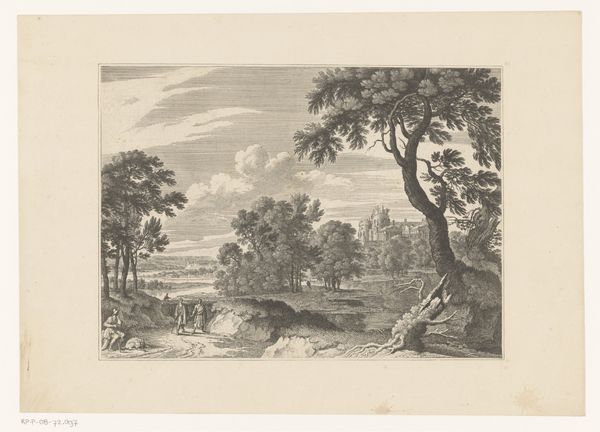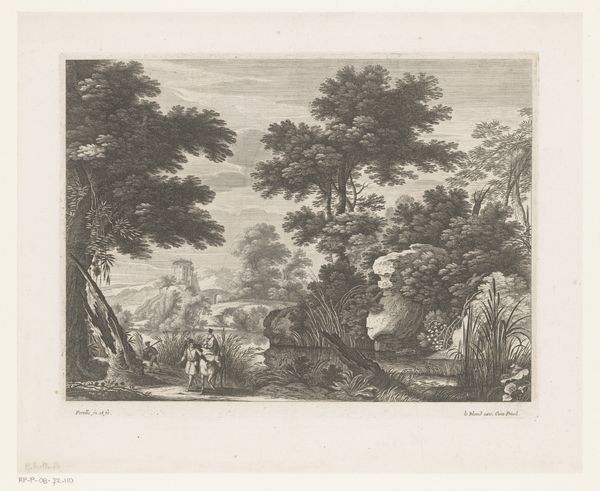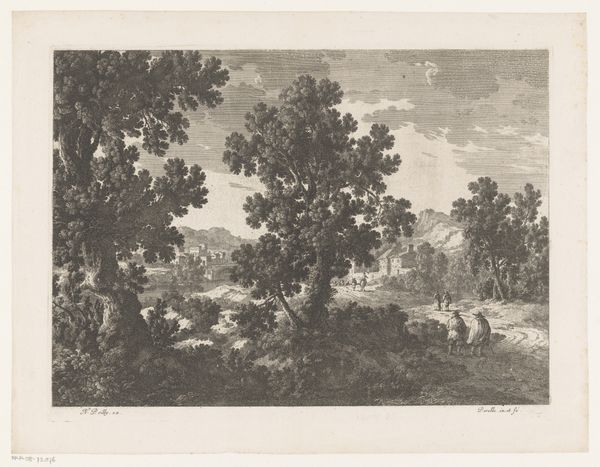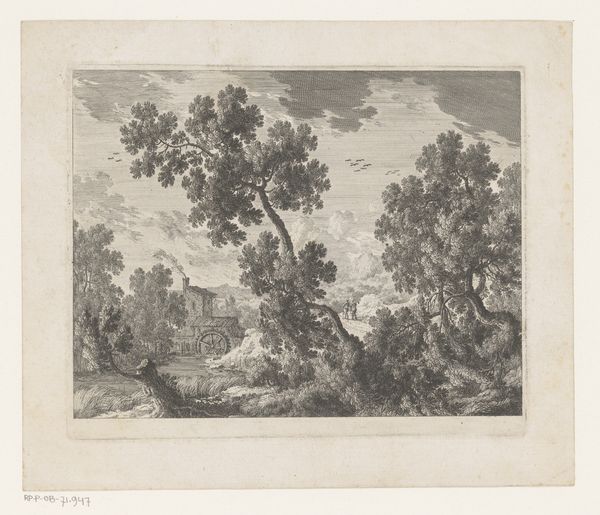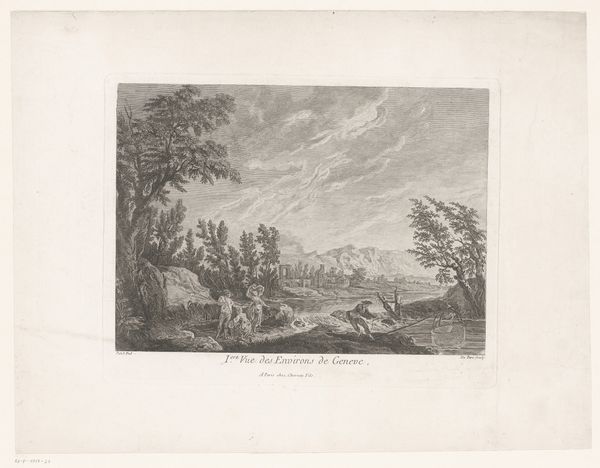
print, engraving
#
baroque
# print
#
landscape
#
form
#
line
#
engraving
#
realism
Dimensions: height 295 mm, width 402 mm
Copyright: Rijks Museum: Open Domain
Curator: Welcome! We're standing before Nicolas Perelle's "Landschap met bomen en ruïne," an engraving dating sometime between 1613 and 1666, currently held here at the Rijksmuseum. Editor: My initial impression is one of wistful serenity. The print feels balanced, almost staged. There’s a deliberate use of line to direct the eye, creating a calming, bucolic vision. Curator: I think that impression comes from a very specific visual language that circulated at the time, wherein ruins weren't merely depictions of decay but symbols loaded with political and social implications. They were powerful allegories for reflecting on power structures and social orders. Editor: Interesting. I am drawn to the detail in the foliage, and how Perelle contrasts that texture with the smoothness of the sky. The formal elements—the shapes, the varying densities of line— create such depth. Curator: It's crucial to consider how landscapes, particularly those featuring classical ruins, became associated with concepts of national identity. As well as the ever-present question around power, in its rise, fall, and cyclical patterns. It reminds us to think critically about whose stories are centered. Who can even access the 'calming bucolic vision' you initially identified, and under what conditions? Editor: You're right, there’s an inherent contradiction. A controlled depiction of untamed nature. Even those figures walking the path—their scale contributes to this feeling of control and designed perspective, reinforcing an artifice of order within nature itself. I cannot deny it, the perspective lends to a certain elitism to the scene, doesn't it? Curator: Precisely, understanding Perelle’s world becomes inseparable from decoding his artwork, particularly through its engagement with sociopolitical elements present at the time. Editor: So, while I appreciate the artistry, analyzing it purely from the line and form, it's impossible to ignore the bigger, broader story—a vision of order contrasted by a past, or an anticipated, collapse. It challenges its perceived serenity, doesn't it? Curator: Absolutely. It’s in the convergence of artistic technique, social critique, and individual experiences that the work reveals its power, I think. Editor: A powerful reminder that even landscapes are never merely landscapes!
Comments
No comments
Be the first to comment and join the conversation on the ultimate creative platform.

